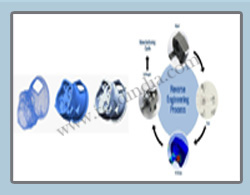Reverse Engineering
Reverse engineering is the process of analyzing and understanding the design, structure, functionality, and components of a product, system, or object in order to replicate, reproduce, or modify it.
- The primary purpose of reverse engineering is to gain insight into how a product or system works, without access to its original design documentation or intellectual property. Reverse engineering allows engineers, designers, and researchers to understand the principles, materials, and processes used in the creation of a product or system.
- The reverse engineering process typically involves the following steps:
Capture: Physical measurements, data acquisition, and non-destructive testing techniques are used to gather information about the product or system, including its dimensions, geometry, materials, and properties.
Analysis: The collected data is analyzed to understand the design, structure, components, and functionality of the product or system. Techniques such as disassembly, teardown, and inspection may be used to further examine internal components and mechanisms.
Modeling: Computer-aided design (CAD) software is used to create digital models, drawings, or simulations of the product or system based on the collected data. Three-dimensional (3D) scanning and imaging technologies may be used to create accurate representations of complex shapes and surfaces.
Documentation: Documentation, reports, and specifications are generated to document the findings, observations, and insights gained from the reverse engineering process. This documentation serves as a reference for future analysis, design, or reproduction efforts. - Reverse engineering raises legal and ethical considerations related to intellectual property rights, confidentiality, and fair competition. It is important to comply with laws and regulations governing intellectual property, trade secrets, patents, and copyrights, and to obtain permission or authorization from rights holders when reverse engineering proprietary products or systems.
Purpose :
Process :
Legal and Ethical Considerations :








